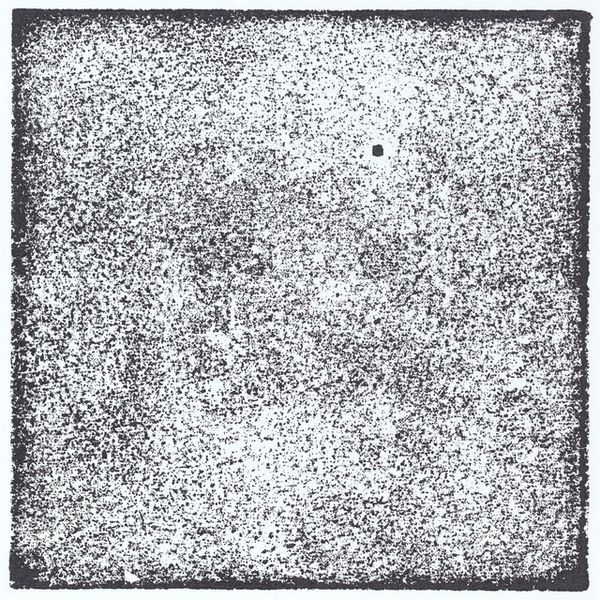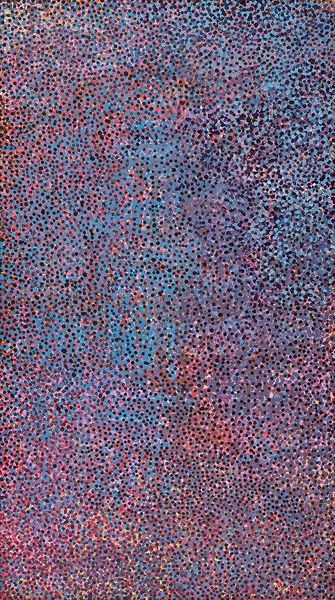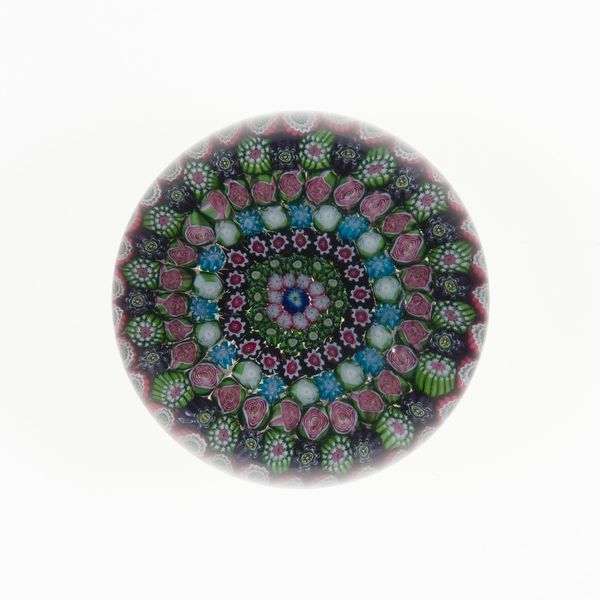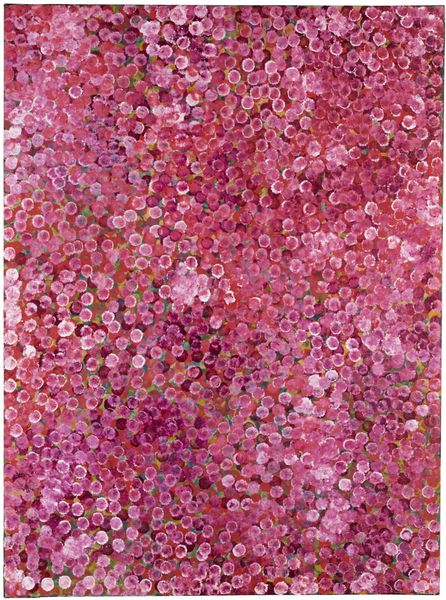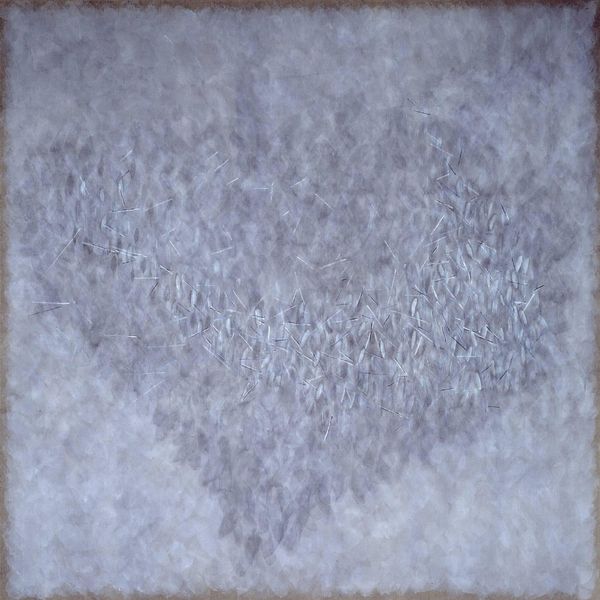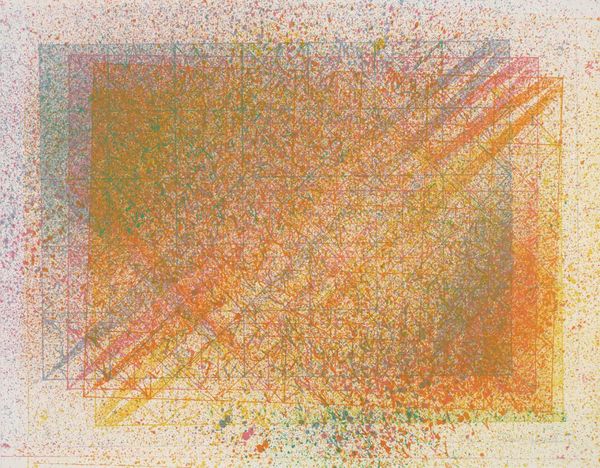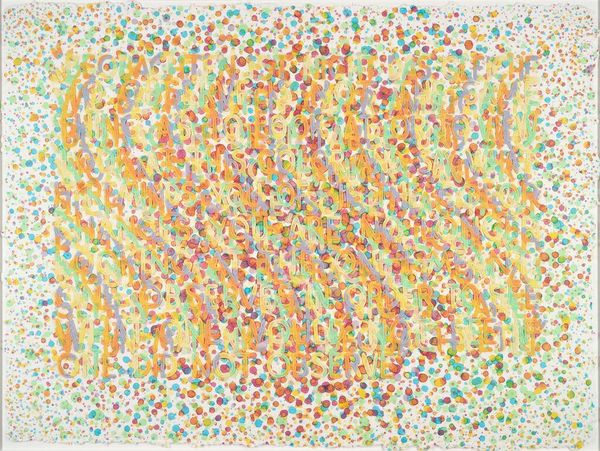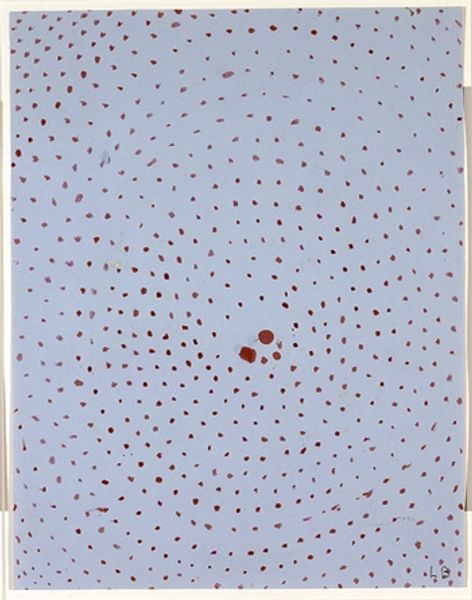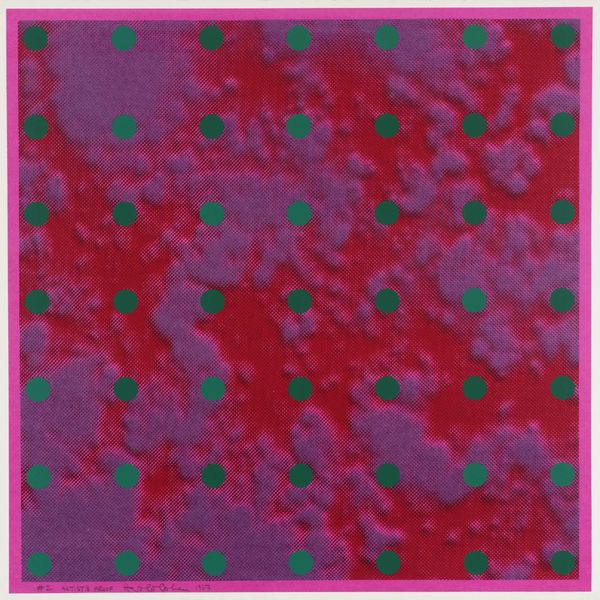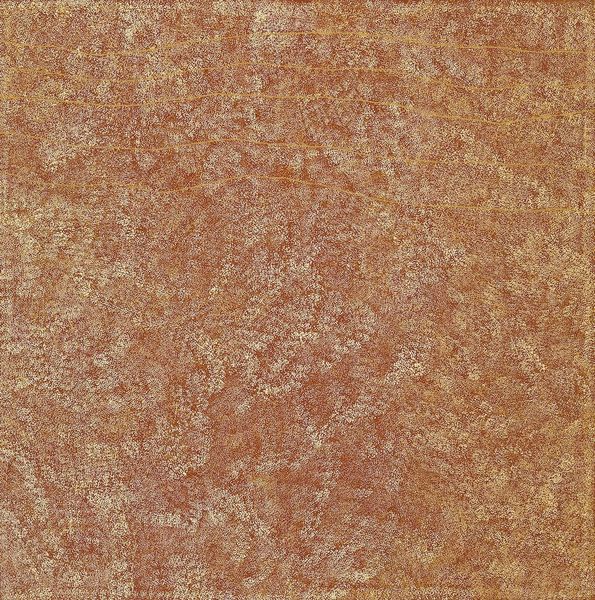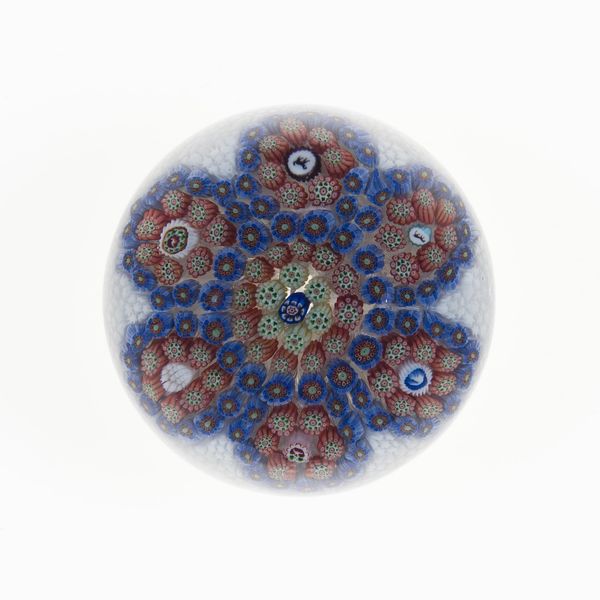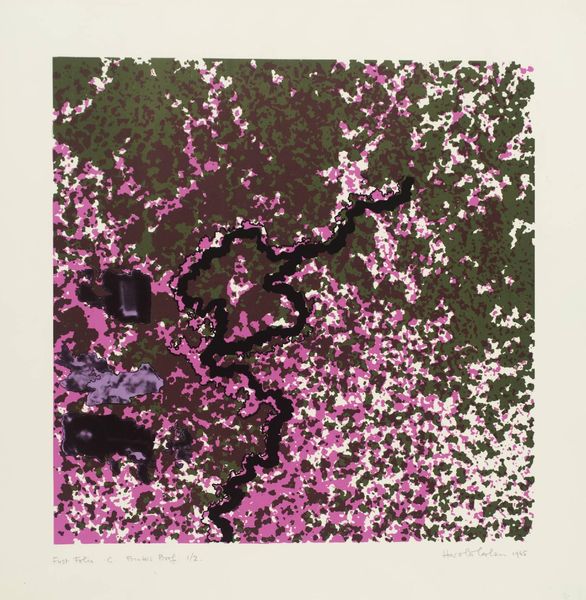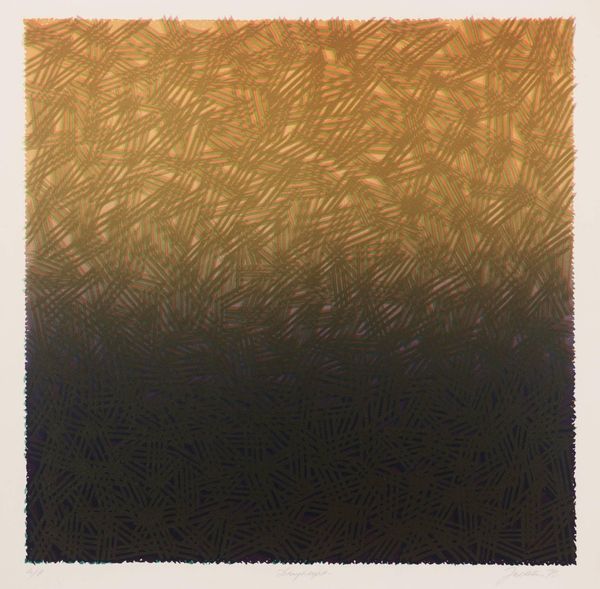
painting, acrylic-paint
#
natural stone pattern
#
naturalistic pattern
#
organic
#
non-objective-art
#
painting
#
circle
#
acrylic-paint
#
geometric pattern
#
abstract pattern
#
minimal pattern
#
organic pattern
#
geometric
#
flower pattern
#
pattern repetition
#
layered pattern
#
combined pattern
#
modernism
Copyright: Richard Pousette-Dart,Fair Use
Curator: Here we have Richard Pousette-Dart’s 1991 work, “Palm Sight,” achieved with acrylic on canvas. It presents itself as an almost perfectly rendered circle, hovering against a grey field. Editor: My first impression is of shimmering, ethereal lightness. The close, rhythmic patterns evoke cellular structures and celestial expanses. What do you think holds its enigmatic, almost paradoxical harmony? Curator: I would suggest it is necessary to consider the artist's engagement with both abstraction and spiritual themes. Pousette-Dart was deeply influenced by Eastern philosophies. The 'Palm Sight' might act as a lens through which we view our position in the broader universe, mirroring a macrocosm within a microcosm. Editor: The consistent distribution of value across the sphere is structurally interesting. Consider the delicate shifts of hue, tiny punctuations of gold and umber dancing against a cool grey that maintains visual equilibrium and a dynamic, meditative quality. Curator: That invites exploration into identity politics, specifically in Pousette-Dart's interest in abstracting forms in ways that encourage multicultural narratives. The universality of circular shapes allows the artist to comment on art’s unique position to reach beyond race and class boundaries. Editor: Do you see a relation to the Symbolist movement? There's a sense of transcendence evoked through these meticulously crafted pictorial means, these points of almost unnoticeable impasto create rhythm across the sphere. Curator: Absolutely, that adds to the symbolic power; these geometric shapes may allow for introspection but in some ways, for a society ever changing they represent a need for clarity. The almost meditative rendering gives it additional presence. Editor: Reflecting on the composition, I admire how he created a sense of both boundlessness and constraint—achieving an effect both contained and expanding. Curator: This prompts us to remember art’s capacity to not only represent our place in society, but also inspire needed conversations, about what we aspire to as a more united culture.
Comments
No comments
Be the first to comment and join the conversation on the ultimate creative platform.
